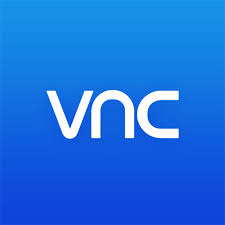As remote working becomes increasingly popular and more and more businesses are relying on virtual machines to get their work done, the need for a reliable and secure remote access protocol has become paramount.
Remote Desktop Protocol (RDP) is the standard for remote access, but with its inherent security issues and vulnerabilities, many people are now looking for RDP alternatives.
In this blog post, we’ll explore why people are looking for RDP alternatives, as well as some of the most popular options available.
If you’re having trouble connecting with VNC Viewer, you might want to check out our guide on VNC Troubleshooting. This guide covers common issues that can prevent VNC from working properly and provides step-by-step instructions for resolving them.

Also Read: NeverInstall Alternatives – Best Personal Cloud Computer Solution
What are the alternatives to RDP?
When it comes to remote access, Virtual Network Computing (VNC) and Secure Shell (SSH) are two alternatives to Remote Desktop Protocol (RDP). VNC is a platform-independent protocol used for remote access and control of computers.
SSH is a secure protocol used to transfer files between two computers. Both of these tools offer secure access to another computer, allowing users to connect and remotely manage their machines from any location.
VNC and SSH both provide encryption for secure data transfer and authentication for user verification, making them great alternatives to RDP.
Why are people looking for alternatives to RDP?
There are various reasons why people are looking for alternatives to RDP, such as compatibility issues, lack of security, slow speeds, and costly plans. Understanding these motivations can help individuals choose the best remote connection protocol for their needs.
- Remote Desktop Protocol (RDP) is a Microsoft-developed protocol for remotely accessing computers and other devices. While it’s a useful tool, many people are looking for alternatives to RDP.
- One of the main reasons people are searching for an alternative to RDP is that it is only available on Windows machines. If a user wants to access a computer with a different operating system, they may need a different protocol.
- Another reason people are looking for alternatives to RDP is its lack of security features. As RDP connections can be vulnerable to attacks, many users are seeking solutions that provide better security.
- Additionally, some users have experienced issues with slow connections and lag when using RDP. This has led them to search for protocols that offer faster and more reliable performance.
- Finally, some users may find the pricing structure of RDP expensive. While there are various versions of RDP, it can still be costly for some users. As such, they are seeking alternatives with more affordable plans.

Everything You Need to Know About Virtual Network Computing (VNC)
VNC is a powerful remote desktop software solution that allows users to access another computer or device remotely. We’ll also discuss how to get started with VNC and some tips for using it effectively.
What is VNC?

Virtual Network Computing (VNC) is software that allows a user to access and control a computer remotely. It enables the user to view the desktop of the remote machine and control it with their keyboard and mouse. VNC is an open-source remote access software, meaning that it is free to download and use.
VNC works by using an encryption protocol to create a secure connection between two computers over the internet. The protocol is designed to ensure the data transferred between the two computers remains secure and cannot be intercepted. Once the connection is established, the user can interact with the remote machine as if they were using their own local computer.
VNC utilizes a client-server model in which one computer acts as the server and the other as the client. The server, which is the computer being accessed, will provide access to its desktop and data while the client will send commands and information to the server. To use VNC, both computers must have an appropriate VNC viewer installed.
VNC is an invaluable tool for anyone who needs to remotely access a computer, such as system administrators or IT professionals who need to troubleshoot computers in remote locations. It can also be used for collaboration between multiple users on one project, allowing them to all access the same desktop and collaborate simultaneously.
How does VNC work?
Virtual Network Computing (VNC) is a remote access technology that allows users to control and manage a computer from another device. VNC uses a server-client model, where a local computer acts as the ‘server’ and the remote computer acts as the ‘client.’
The server is responsible for capturing and encoding the user’s input and output, while the client is responsible for sending and receiving data to and from the server. The process of VNC is based on the Transmission Control Protocol (TCP), which is used to establish a connection between the two computers. Once this connection is established, data can be sent and received over the network.
To start a VNC session, the client machine must be connected to the server. Then, the user can use their input devices (mouse, keyboard, etc.) to control the server machine. The server machine captures all of these inputs and sends them to the client machine. On the client side, the data is decoded and rendered onto the screen.
The client machine also sends its data to the server for processing, such as mouse clicks or keyboard strokes. This data is then captured by the server and processed accordingly. Once processed, it is sent back to the client machine where it is then rendered on the screen. This process creates a seamless connection between two computers, allowing users to remotely access their machines.
In addition to providing users with a remote access solution, VNC can also be used for troubleshooting, system maintenance, and more. VNC provides users with a secure connection and complete control of their machines, making it an invaluable tool for any user who needs to access their computers remotely.
What are the benefits of using VNC?
Virtual Network Computing (VNC) is an extremely useful tool for managing multiple computers remotely and securely. It’s easy to set up and use, it’s cost-effective, and it supports multiple platforms so that you can access your computer from any device. Additionally, it offers secure connections and allows for easy file transfers between computers. With all of these benefits, VNC is an excellent choice for those looking to manage multiple computers remotely.
- Cost-Effective: VNC is a cost-effective way of managing multiple computers remotely. It does not require any specialized hardware or software, and it is easy to set up and maintain. Additionally, there are no monthly fees for using VNC, which makes it an attractive option for individuals and businesses on a budget.
- Easy to Use: VNC is simple to use and allows users to easily access their computers from anywhere in the world. All you need to do is install the server software on the computer you wish to access and then download the client software on any device that has internet access. Once these steps have been completed, you can start accessing your computer immediately.
- Secure Connections: VNC offers secure connections so that unauthorized users cannot gain access to your computer. Each connection is encrypted with 256-bit SSL encryption, making it difficult for anyone to gain access to your data. You can also set up two-factor authentication, which adds a layer of security.
- Supports Multiple Platforms: VNC supports Windows, macOS, iOS, Android, and Linux operating systems, so you can access your computer from any device. You can also use it to control multiple computers at once, which can be especially useful in a business setting.
- Easy File Transfer: VNC allows you to transfer files between your local computer and the remote computer you are connected to. This makes it easy to quickly transfer documents, pictures, and other files without having to go through the hassle of emailing them or using cloud storage services.
Remote Desktop Access: VNC’s Unique Uses
Virtual Network Computing (VNC) is a powerful tool that can be used in a variety of ways, ranging from remote access to file sharing. By taking advantage of the features and capabilities of VNC, users can make their computing experience more efficient and secure.
- Remote Desktop Access: VNC enables remote desktop access, allowing users to control and view their computers remotely. This is especially useful for remote working and collaboration.
- Remote System Troubleshooting and Maintenance: VNC allows users to access their systems remotely and troubleshoot any issues they may have. This is particularly useful for IT technicians and system administrators.
- File Sharing: VNC can be used to transfer files from one computer to another, making it easy for users to share documents and data.
- Remote Software Installation: VNC enables users to remotely install software on other computers, allowing for faster deployment and easier maintenance.
- Remote Monitoring and Control: VNC can be used to monitor and control other computers, giving administrators the ability to view the activity and take action as needed.
- Connecting Multiple Computers: VNC can be used to connect multiple computers making it easier to manage and maintain a network of computers.

If you’re new to VNC and want to learn how to use it, our tutorial on How To Use VNC is a great place to start. This guide covers everything from setting up VNC on your devices to connecting to remote machines and performing basic tasks.
Everything You Need to Know About Secure Shell (SSH)
Secure Shell (SSH) is a network protocol used to securely communicate between two computers over an unsecured network.
It is often used to remotely log into a server, allowing you to access and control the system as if you were sitting in front of it. In this blog post, we’ll cover the basics of SSH, including what it is, its uses, and how to set it up.
We’ll also discuss some of the benefits and drawbacks of using SSH, so you can decide whether it is the right choice for your needs.
What is SSH?

Secure Shell (SSH) is a secure network protocol used for remote access to computers, networks, and systems. It provides strong authentication and encryption for data transferred over an unsecured network. SSH was designed to replace the insecure Telnet protocol, which allowed unencrypted data transfers between computers.
The primary purpose of SSH is to enable secure remote access to systems over an untrusted network. SSH encrypts all data being transferred between two computers, preventing anyone from reading the data as it is sent. This means that passwords and other sensitive information remain private, even if someone can intercept the connection.
In addition to providing secure remote access, SSH can also be used to securely transfer files between computers. It also provides additional security features such as port forwarding and tunneling, which can be used to increase network security.
Finally, SSH can also be used to securely execute commands on remote systems, allowing users to remotely manage systems without having to physically access them. This is a powerful tool for a system administrators and allows them to quickly perform tasks such as software updates and configuration changes without having to travel to the server’s physical location.
What are the benefits of using SSH?
The most obvious benefit of using SSH is its ability to provide secure communications between two or more computers. SSH encrypts the data being sent over a network connection, ensuring that the contents are hidden from outsiders. Additionally, SSH provides authentication, meaning that the computers communicating will only accept connections from authorized users.
- Improved Network Security: SSH can help improve network security by limiting access to systems and preventing unauthorized access from malicious actors. By authenticating users with strong cryptography and encrypting data, SSH reduces the risk of data theft and other attacks on networks.
- Enhanced Productivity: By allowing remote users to connect to and manage remote systems, SSH can increase productivity. This is especially useful for teams that need to collaborate on projects across multiple locations.
- High Flexibility: SSH supports many different types of configurations and authentication methods, making it highly flexible. This allows organizations to quickly set up new connections without needing to manually configure each one. Additionally, SSH can be used to securely connect to cloud services and applications, allowing users to access them from anywhere.
- Cost Savings: Setting up an SSH server requires minimal hardware and setup costs, allowing organizations to save money compared to setting up and maintaining dedicated hardware for remote access. Additionally, using SSH can reduce the cost of purchasing and installing additional software for remote management purposes.
What are some best practices for using SSH?
When setting up an SSH server, you should always use a strong and unique password for authentication. Avoid using easily guessed words or phrases, such as common dictionary words or birthdays, as these can be easily guessed by malicious users.
- Keep software updated: You should always ensure that your SSH server is running the latest version of the software. Updating your software will help patch security holes and protect against malicious attacks.
- Restrict user access: You should always make sure that only authorized users are granted access to your SSH server. All other accounts should be disabled or removed.
- Monitor user activity: Regularly monitor user activity on your server to detect any suspicious behavior. This could include unusual login attempts, unexpected changes in permissions, or any attempts to run suspicious commands.
- Use SSH keys: To provide an additional layer of security, consider setting up SSH keys. This allows users to log into your server without needing to enter a password, while still providing an extra layer of security.
- Use two-factor authentication: If possible, you should enable two-factor authentication for additional protection. This requires users to input a second form of verification, such as a code sent to their mobile device, when attempting to log in.
- Disable root access: Whenever possible, you should disable direct root access from remote systems. This reduces the risk of malicious actors gaining access to the root account and performing malicious activities.
By following these best practices, you can ensure that your SSH server is secure and protected from potential attackers. Keeping your server up-to-date and monitoring user activity are important steps for maintaining a secure environment. Additionally, using SSH keys and two-factor authentication can provide an additional layer of security to protect against malicious attacks.
If you’re trying to decide between RDP and VNC, you might find our article on RDP vs VNC: Which RD Tool Is Better? helpful. This article compares the two remote desktop protocols based on factors such as security, performance, and ease of use, and provides recommendations based on different use cases.
Conclusion
In conclusion, Remote Desktop Protocol (RDP) is no longer the only way to access remote desktops. There are a variety of alternatives that provide improved performance, security, and user experience. As organizations become increasingly reliant on remote working, these alternatives can provide an effective solution for users to access their workstations remotely. It’s important to understand the capabilities of each alternative and how they fit into your environment before making a decision on which one to use. With the right tools in place, you can ensure that your remote working needs are met efficiently and securely.
